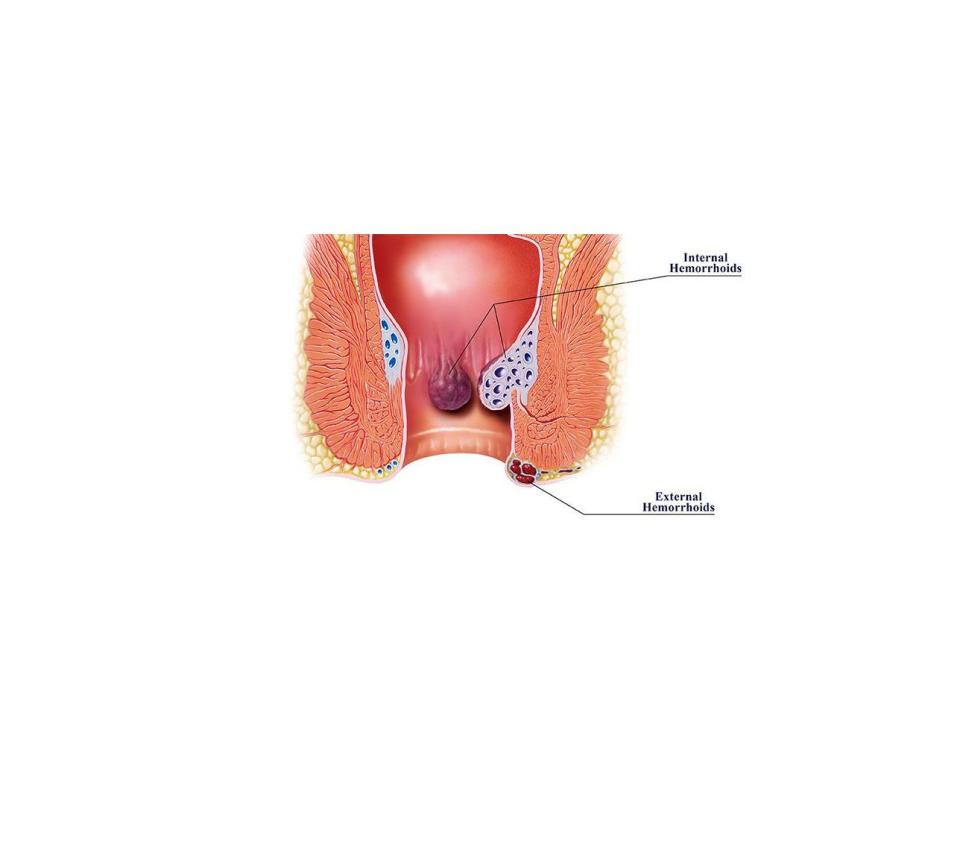A Doctor Explains What Everyone Needs to Know About Hemorrhoids

Hemorrhoids aren’t really something you think about unless you’re dealing with the symptoms yourself. But at an event for health journalists years ago, I heard a colorectal surgeon say something that nearly made my eyeballs bug out of my face. “All of us have hemorrhoids, all the time,” she said. Uh, no, nope. There’s no way. All these healthy-looking people sitting comfortably on their bums around me have hemorrhoids?
So, I called her up after the event and asked her what she meant by that inflammatory (sorry) comment. Never in my life did I think I’d spend 45 minutes on the phone casually throwing around phrases like “anal canal.” I also didn’t know there was so much to learn about hemorrhoids.
“I love telling people that,” says Alexis Grucela, M.D., the doctor who first mentioned this idea, who is also the chief of colorectal surgery at Northern Westchester Hospital in New York. “It’s usually so shocking to them.”
But hemorrhoids are totally normal. “They’re anal tissues that give us extra support in the anal canal,” Dr. Grucela explains. Just like pelvic floor muscles help keep urine from leaking out when you, say, cough or laugh, hemorrhoid tissue does the same for stool and gas. “It’s only when they become symptomatic that people start noticing them,” Dr. Grucela says. “Usually, they just do their job.”
In fact, hemorrhoids are so common that by age 50, the American College of Gastroenterology (ACG) estimates nearly half of Americans have hemorrhoids and 5% of the United States population have sought medical care for them. If you’ve ever suffered from the less than glamorous discomfort of hemorrhoids, here are the details everyone should know.

Hemorrhoids are normal blood vessels in the rectum or anal canal that become swollen or dilated, according to the ACG. But something must go very wrong for that normal anal tissue to become the angry, itchy, painful protrusions you usually picture when you think of hemorrhoids.
There are two different kinds of hemorrhoids, internal and external, and they’re pretty much exactly what they sound like. External hemorrhoids occur right at the anal opening, Dr. Grucela says, and they’re covered with skin. Because they’re covered with skin, they also have nerves, which means external hemorrhoids are the ones that can be seen and come with the uncomfortable symptoms often associated with hemorrhoids.
Internal hemorrhoids, on the other hand, are inside the anal canal. You (obviously) can’t see them, and because they’re not covered with skin, you won’t feel any symptoms from them, either. However, internal hemorrhoids are more likely to bleed. If the situation gets dire, they can prolapse, or fall out of the anus.
A Doctor Explains What Everyone Needs to Know About Hemorrhoids
Hemorrhoids aren’t really something you think about unless you’re dealing with the symptoms yourself. But at an event for health journalists years ago, I heard a colorectal surgeon say something that nearly made my eyeballs bug out of my face. “All of us have hemorrhoids, all the time,” she said. Uh, no, nope. There’s no way. All these healthy-looking people sitting comfortably on their bums around me have hemorrhoids?
So, I called her up after the event and asked her what she meant by that inflammatory (sorry) comment. Never in my life did I think I’d spend 45 minutes on the phone casually throwing around phrases like “anal canal.” I also didn’t know there was so much to learn about hemorrhoids.
“I love telling people that,” says Alexis Grucela, M.D., the doctor who first mentioned this idea, who is also the chief of colorectal surgery at Northern Westchester Hospital in New York. “It’s usually so shocking to them.”
But hemorrhoids are totally normal. “They’re anal tissues that give us extra support in the anal canal,” Dr. Grucela explains. Just like pelvic floor muscles help keep urine from leaking out when you, say, cough or laugh, hemorrhoid tissue does the same for stool and gas. “It’s only when they become symptomatic that people start noticing them,” Dr. Grucela says. “Usually, they just do their job.”
In fact, hemorrhoids are so common that by age 50, the American College of Gastroenterology (ACG) estimates nearly half of Americans have hemorrhoids and 5% of the United States population have sought medical care for them. If you’ve ever suffered from the less than glamorous discomfort of hemorrhoids, here are the details everyone should know.
We all have hemorrhoids—seriously.
Solve the daily Crossword

